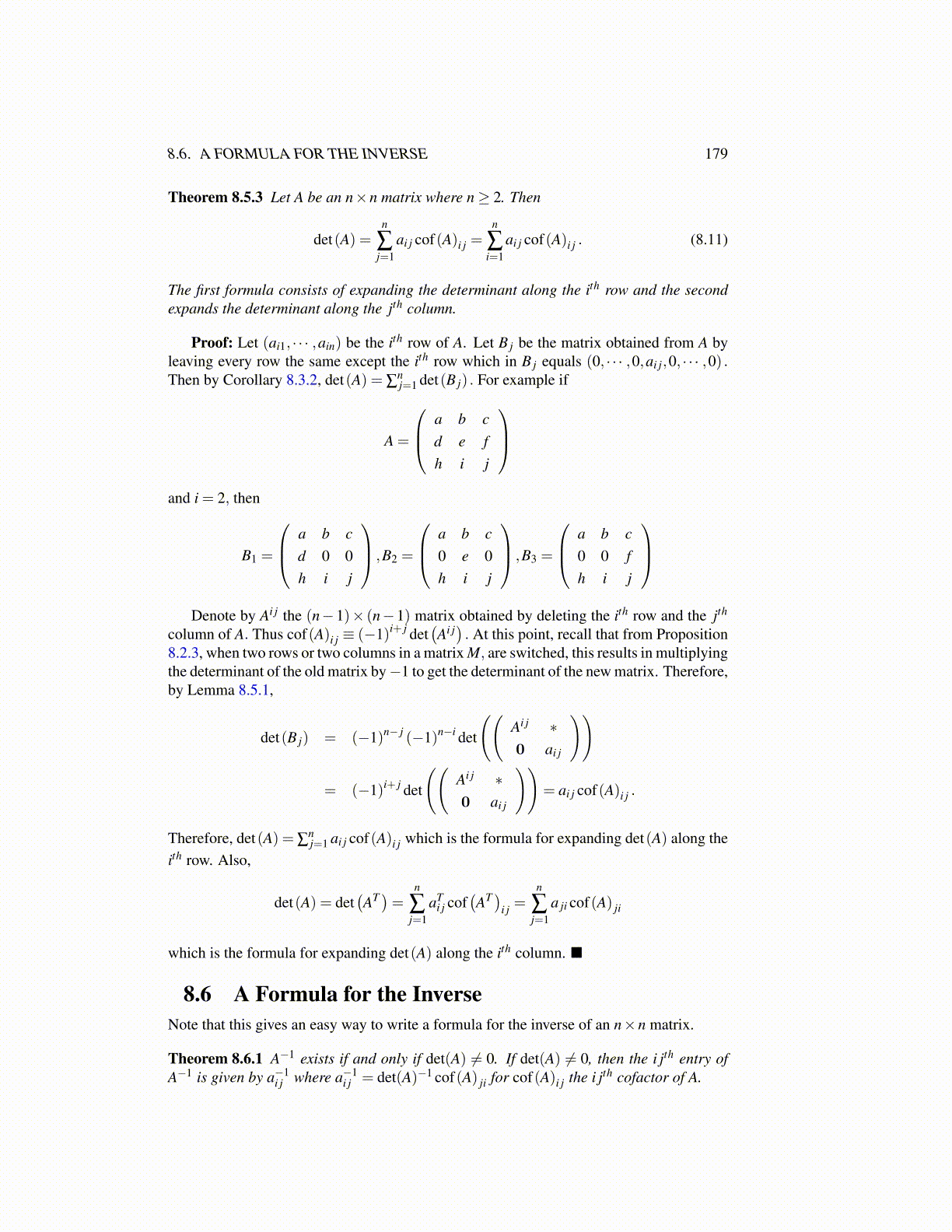
8.6. A FORMULA FOR THE INVERSE 179
Theorem 8.5.3 Let A be an n×n matrix where n≥ 2. Then
det(A) =n
∑j=1
ai j cof(A)i j =n
∑i=1
ai j cof(A)i j . (8.11)
The first formula consists of expanding the determinant along the ith row and the secondexpands the determinant along the jth column.
Proof: Let (ai1, · · · ,ain) be the ith row of A. Let B j be the matrix obtained from A byleaving every row the same except the ith row which in B j equals (0, · · · ,0,ai j,0, · · · ,0) .Then by Corollary 8.3.2, det(A) = ∑
nj=1 det(B j) . For example if
A =
a b cd e fh i j
and i = 2, then
B1 =
a b cd 0 0h i j
,B2 =
a b c0 e 0h i j
,B3 =
a b c0 0 fh i j
Denote by Ai j the (n−1)× (n−1) matrix obtained by deleting the ith row and the jth
column of A. Thus cof(A)i j ≡ (−1)i+ j det(Ai j). At this point, recall that from Proposition
8.2.3, when two rows or two columns in a matrix M, are switched, this results in multiplyingthe determinant of the old matrix by−1 to get the determinant of the new matrix. Therefore,by Lemma 8.5.1,
det(B j) = (−1)n− j (−1)n−i det
((Ai j ∗0 ai j
))
= (−1)i+ j det
((Ai j ∗0 ai j
))= ai j cof(A)i j .
Therefore, det(A) = ∑nj=1 ai j cof(A)i j which is the formula for expanding det(A) along the
ith row. Also,
det(A) = det(AT )= n
∑j=1
aTi j cof
(AT )
i j =n
∑j=1
a ji cof(A) ji
which is the formula for expanding det(A) along the ith column. ■
8.6 A Formula for the InverseNote that this gives an easy way to write a formula for the inverse of an n×n matrix.
Theorem 8.6.1 A−1 exists if and only if det(A) ̸= 0. If det(A) ̸= 0, then the i jth entry ofA−1 is given by a−1
i j where a−1i j = det(A)−1 cof(A) ji for cof(A)i j the i jth cofactor of A.